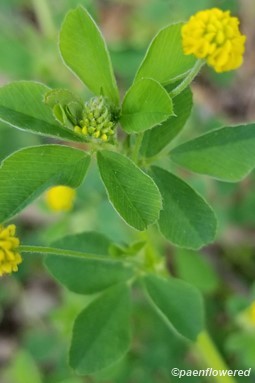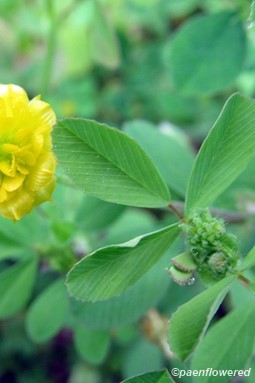Trifolium campestre
A weedy nonnative plant often growing in grassy, open areas
Trifolium campestre low hop clover
Add to MyPlants View Locations
You are more likely to walk on than stop and admire this flowering plant. It is an annual or biennial alien weed, native to Central and Eastern Europe. It was brought to the United States as a forage crop. Like other clovers it is a member of the pea family. The low hop clover can sometimes be hard to distinguish from the hop clover, least hop clover and the black medic. All have leaves that are clover-like with three parts. The low hop clover has the unique feature of having the stalk of the terminal leaflet longer than the others. It was also used to improve soil conditions because it is a legume and produces Nitrates from Nitrogen gas in the atmosphere. It quickly escaped cultivation and now can be found in lawns, roadsides, fields and waste areas, throughout North America.
It can grow easily in poor soils and sometimes will form spreading mats that prevent grass from growing. The flowers are lemon yellow and on roundish heads less than 1/2 inch in diameter. There are usually 15-40 individual florets per flower head. It blooms from April to September.
Habitat & Range
Frequent in roadsides, old fields and waste places.
Present throughout the state, with a bigger population in the south.
Wetland code: Not classified
Phenology
Flowers May to October.
Identification Tips
The terminal leaflet is distinctly stalked.
Trifolium campestre low hop clover
Synonyms: Trifolium procumbensAdd to MyPlants View Locations










Comments
Have you spotted this plant in your area? We'd love to hear about your experience! Share your comments or questions about the plant below. Comments are moderated before posting.